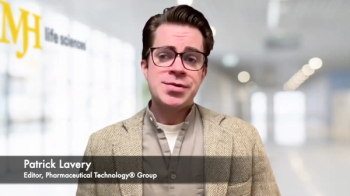
- Pharmaceutical Technology-05-02-2011
- Volume 35
- Issue 5
Perception and Reality
Those who doubt there's faith in science, should check out our annual Bioprocessing Survey.
If you, like me, were a science student as an undergraduate who had friends in the humanities, you had the inevitable discussion about the objectivity of fact versus the subjectivity of faith.
Michelle Hoffman
The scientist would cite the rigor and reliability of the scientific method and the "truth" of reproducible results. The humanities student would argue that the so-called axiomatic truth of the sun rising tomorrow, for example, was just another form of faith. The scientist, argued the humanities student, was operating under the assumption that past behavior was a predictor of future behavior and so believed the sun would rise tomorrow merely because it had every day in the past for eons.
The arguments are not very original, nor are they decisive, and yet they remain with me. Every so often during introspective moments, I subject myself to a sort of epistemological grilling: How do I really know what I think to be true? What data set am I using to reach my conclusions, and how was it generated? And finally, do I believe this to be true because I want it to be, because it's an act of faith or will, or is there really substantial, objective support for this?
These are questions I revisit every year when we conduct our annual Bioprocessing Survey, which you can read in this month's special issue on Bioprocessing and Sterile Manufacturing. (Thank you, by the way, to those who took the survey; and for those who did not, there's always next year.) The biopharmaceutical manufacturing sector has over the years been exploring the benefits of single-use, disposable components in its operations versus those of traditional stainless-steel components. Opinions about the relative merits of one kind of equipment over the other abound. And they diverge, depending on whether one actually uses disposables.
In many cases, users of all-stainless equipment underestimate the advantages of single-use and overestimate the challenges. For example, only 35% of all-stainless users (and 31% of those using hybrid systems-systems that combine stainless and single-use components) perceive a cost advantage to all-disposable systems as opposed to 54% of those who actually use all-disposable systems. In another example: only 18% of respondents who use all-stainless equipment think that process reproducibility is an advantage to all-disposable equipment. In contrast, 31% who use all-disposable cite reproducibility as an advantage. Users of all-stainless may also overestimate challenges to all-disposable manufacturing lines. Twenty percent of respondents who use all-stainless equipment think that all-disposable equipment increases the risks of contamination. No one—0%—of those who actually use all-disposable equipment does.
The survey cannot determine how firmly held are these beliefs or what it would take to dispel them. But it's an interesting object lesson to me and perhaps to others who see science and scientists as purely objective.
I had another reason to consider attitudes toward disposables in particular. During the INTERPHEX 2011 conference, I hosted a panel discussion around continuous manufacturing. The discussion focused on traditional small-molecule, solid dosage forms. I learned that one of the hurdles is finding an automated method for moving powders from one unit operation to another—the answer to which for some products may be to keep all the chemistry in solution. It then occurred to me that a completely soluble process would start to look a lot like the process for biopharmaceuticals and could therefore benefit from the use of disposable components. If that's the case, then the "objective truths" of a whole new group of process developers and engineers will have to be overcome.I wonder how our survey results will look then.
Michelle Hoffman is editorial director of Pharmaceutical Technology. Send your thoughts and story ideas to
Articles in this issue
over 14 years ago
Pharmaceutical Technology, May 2011 Issue (PDF)over 14 years ago
Report from Hungaryover 14 years ago
INTERPHEX Innovationsover 14 years ago
Supply Chain Painover 14 years ago
In the Spotlight May 2011over 14 years ago
Up Close and Personalover 14 years ago
Gelatin Capsule Shell Cross-Linkingover 14 years ago
Q&A with Greg Irace,sanofi-aventisover 14 years ago
Pharmaceutical Excipients for Hot-Melt Extrusionover 14 years ago
Global Healthcare on the Ground: Roche Takes on Illnesses in LDCsNewsletter
Get the essential updates shaping the future of pharma manufacturing and compliance—subscribe today to Pharmaceutical Technology and never miss a breakthrough.





